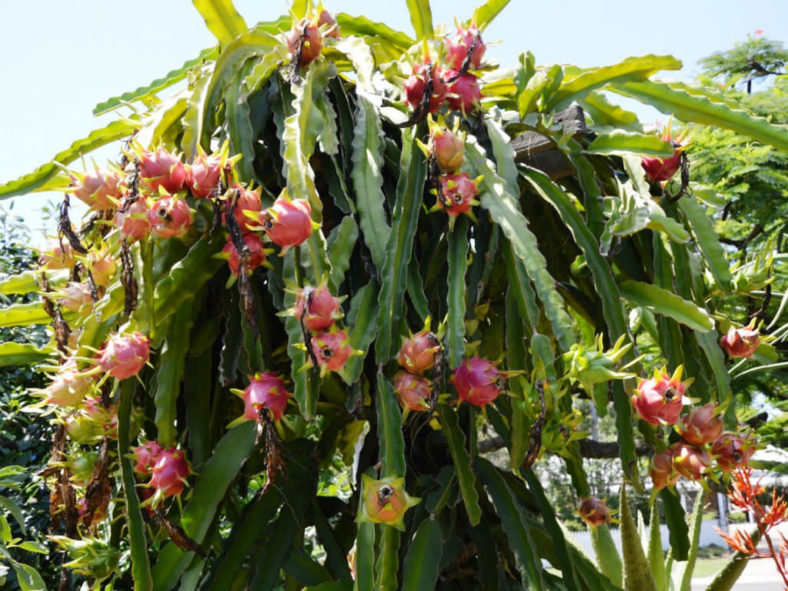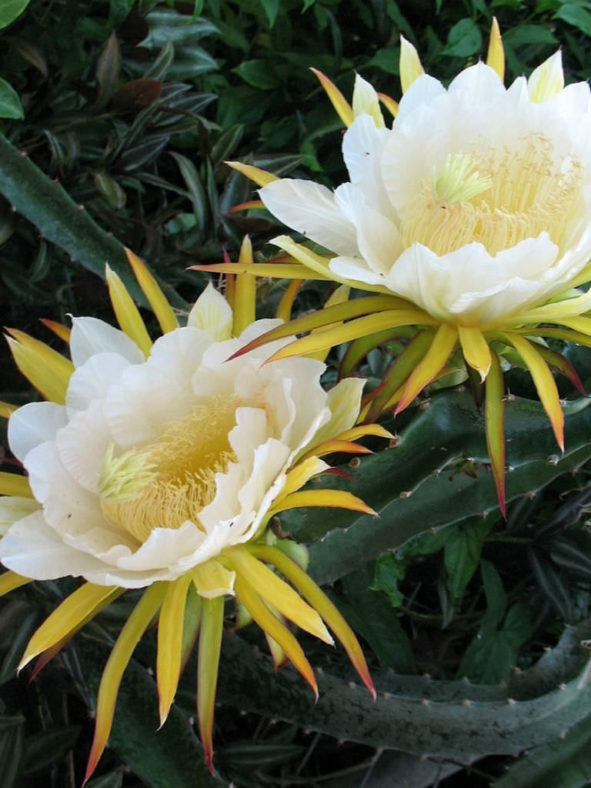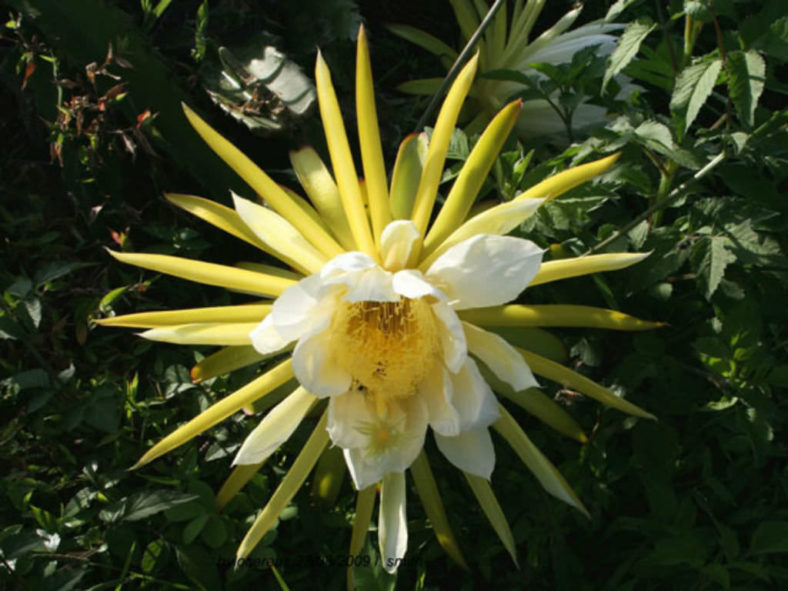Scientific Name
Hylocereus costaricensis (F.A.C.Weber) Britton & Rose
Common Name(s)
Costa Rica Nightblooming Cactus, Costa Rican Pitahaya, Costa Rican Dragon Fruit, Red-fleshed Pitaya, Purple Pitaya, Purple Dragon Fruit, Strawberry Pear Cactus
Synonym(s)
Cereus costaricensis, Cereus trigonus var. costaricensis
Scientific Classification
Family: Cactaceae
Subfamily: Cactoideae
Tribe: Hylocereeae
Genus: Hylocereus
Origin
Hylocereus costaricensis is native to Costa Rica and Nicaragua.
Description
Hylocereus costaricensis is an intriguing cactus for a variety of reasons. Even though it is ground-dwelling, the slender, leafless stems flop and clamber like a vine, gaining support from tree trunks, rocks, or walls. It is renowned for its large, white, nocturnal flowers that are very short-lived. The leathery, fleshy stems have three ribs, each topped with tiny clusters of short spines.
In summer, large flower buds arise on the stems. Each opens at night and remains open for a few hours, releasing perfume to attract bat pollinators. The pale yellow-green bud leaves fold back and resemble petals surrounding the true white petals. The flowers can reach up to 12 inches (30 cm) in length and nearly equal in diameter. The edible fruits, called Pitaya or Strawberry Pear that follow weeks later are oval, vibrant red, and contain purple pulp and tiny black seeds.

Hardiness
USDA hardiness zones 10a to 11b: from 30 °F (−1.1 °C) to 50 °F (+10 °C).
How to Grow and Care
Like most cacti, Cereus are fairly low-maintenance and hardy. Ensure they receive enough water without becoming waterlogged, especially during the summer, and fertilize them for best results. If the roots have become black or overly soft, the cactus could be experiencing root rot. Cut away the affected parts and replant. Most gardeners interested in cacti should be able to cultivate these without much problem.
It may become necessary to repot your Cereus if it outgrows its container. If so, ensure the soil is dry, then remove the pot. Knock away old soil and prune away rotted or dead roots, then replace it in a new pot and backfill with new soil. Ensure that cacti are not overwatered when planted in new pots, as this can lead to root rot. It should be left dry for about a week and then watered lightly.
These cacti propagate quite easily from cuttings. Simply sever a branch and replant in moist, well-drained soil.
Learn more at How to Grow and Care for Cereus.
Links
- Back to genus Hylocereus
- Succupedia: Browse succulents by Scientific Name, Common Name, Genus, Family, USDA Hardiness Zone, Origin, or cacti by Genus
Photo Gallery
Click on a photo to see a larger version.

